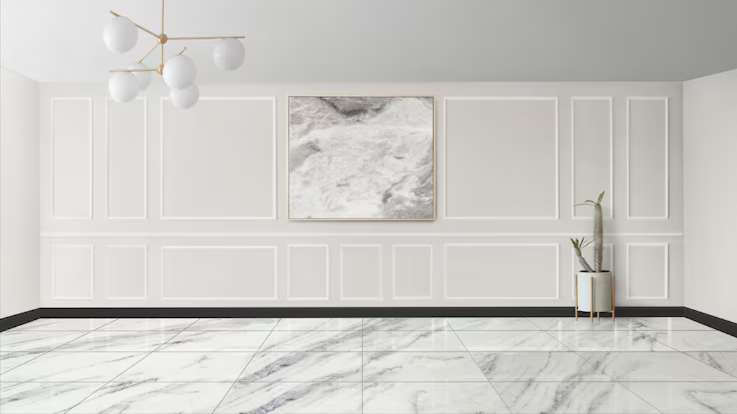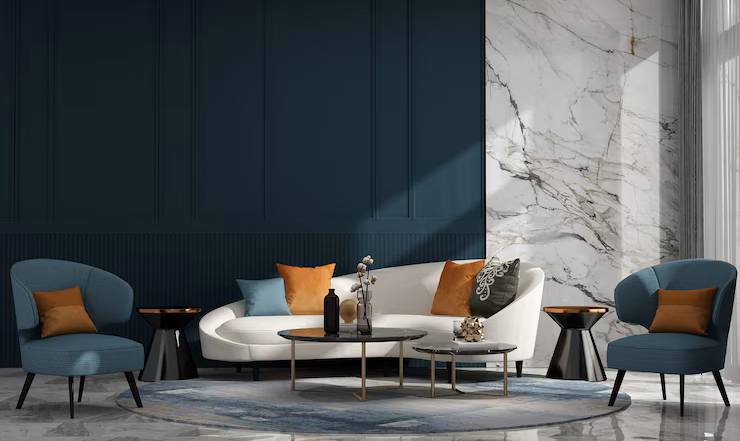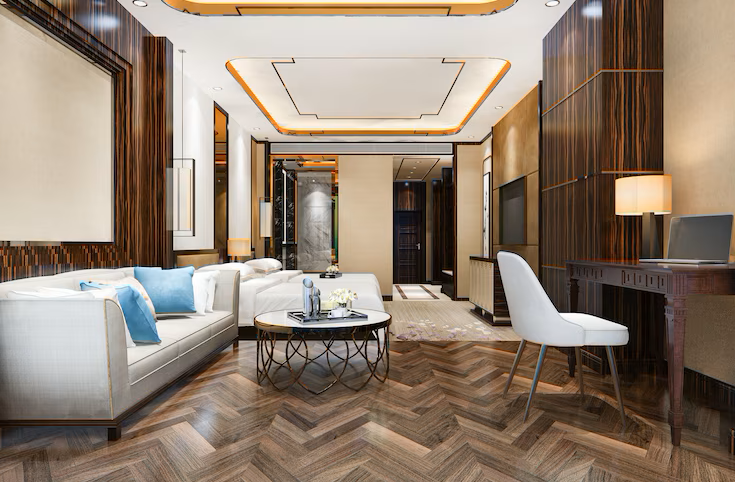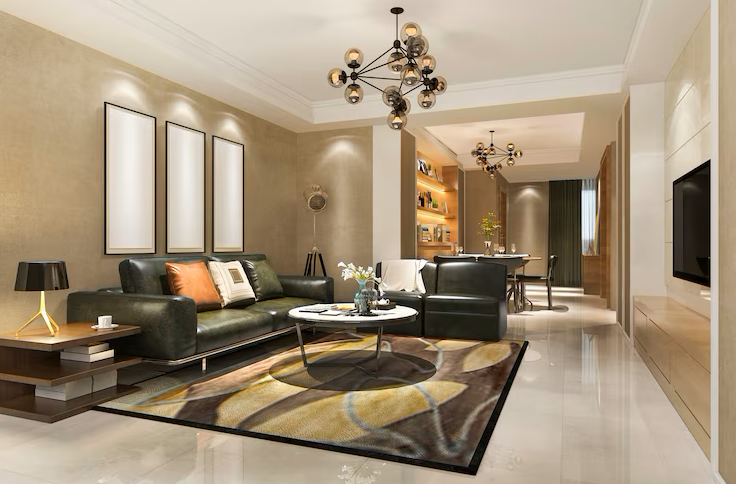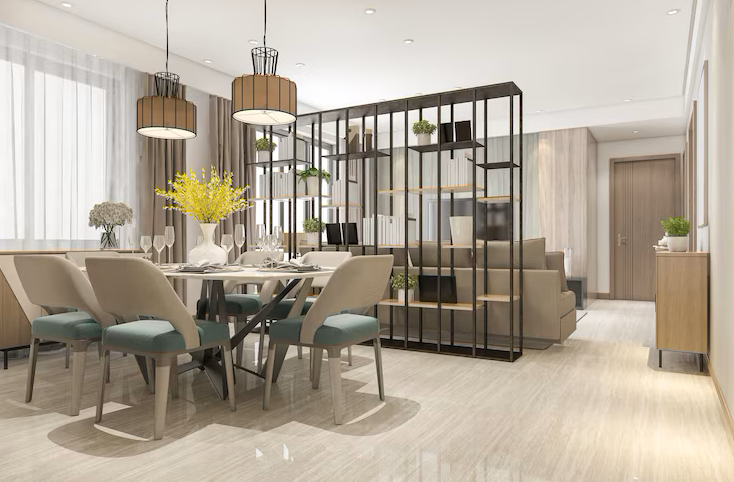How Interior Designers in Chennai Incorporate Vastu Principles into Their Designs
Vastu Shastra — the ancient Indian science of architecture and placement — remains an important influence on modern interiors across India, and Chennai is no exception. For many homeowners in the city, blending contemporary aesthetics with Vastu principles delivers not only a pleasing look but also a sense of balance and wellbeing. This blog explores how interior designers in Chennai blend Vastu with modern design sensibilities to create homes that feel beautiful, functional, and harmonious.
Why Vastu still matters in Chennai homes
Chennai is a city where tradition and modernity coexist. Clients often want spaces that are contemporary and efficient while honoring cultural values. Vastu offers practical guidelines on orientation, zoning, light, and airflow — elements that naturally complement good design. Experienced interior designers in Chennai understand that Vastu is not about rigid rules; it’s about informed layout choices that improve comfort, natural light, circulation, and the overall mood of a space.
Practical ways designers marry Vastu with modern interiors
1. Functional zoning with Vastu-friendly orientations
Designers start by mapping the home according to classical Vastu directions — north, east, south, and west — and assigning functions compatible with those directions. For example:
-
North or northeast for puja, meditation, or prayer corners.
-
East-facing windows for living rooms or dining areas to capture morning light.
-
Southwest for master bedrooms or heavy storage, where stability is desirable.
Interior designers in Chennai adapt these ideas to the plot, natural light, and views, ensuring zones are both auspicious and practical.
2. Entrance and foyer design
The main entrance plays a huge role in Vastu and in first impressions. Designers ensure the entrance is well-lit, clutter-free, and visually welcoming. Where an entrance direction is less-than-ideal, designers use architectural elements—canopies, landscaping, or a well-placed foyer—to redirect energy flow and create a positive arrival sequence without compromising style.
3. Natural light and ventilation — aesthetic and Vastu-aligned
Vastu emphasizes natural light and ventilation. Chennai’s warm climate makes cross-ventilation and shade important as well. Designers balance this by placing operable windows, jalis (lattice screens), and verandah elements to optimize airflow and daylight while controlling heat gain. These choices satisfy both Vastu ideals and climate-responsive design.
4. Material choices and colour palettes
Materials and colours influence mood. Vastu suggests certain tones and elements for different directions — earthy tones for stability, lighter shades for directions associated with prosperity or learning. Interior designers in Chennai combine these recommendations with contemporary palettes (muted neutrals, accent tones) and durable local materials like kota stone or engineered finishes that work well in the city’s humid conditions.
5. Kitchen layout that balances tradition and function
Kitchen placement and orientation are central to Vastu. Designers typically encourage kitchens to be in the southeast or northwest and design the cooktop placement, storage, and sink layout to respect those principles. At the same time, modern kitchen ergonomics, efficient appliances, and island counters are integrated so style and usability aren’t compromised.
6. Furniture placement and circulation
Vastu prefers open, uncluttered circulation. Designers in Chennai plan furniture to maintain free pathways and avoid obstructing natural light. Built-in storage, multipurpose furniture, and minimalistic layouts help keep spaces airy — which aligns with both Vastu and contemporary tastes.
7. Incorporating greenery and water features
Plants and water elements are used to enhance positivity and microclimate. Designers use indoor plants, green walls, or small water features in appropriate zones to align with Vastu guidance while improving indoor air quality — a smart move in urban Chennai flats and villas alike.
Customizing Vastu for urban Chennai living
Not every home allows perfect Vastu alignment. In dense neighborhoods and apartments, designers provide pragmatic alternatives: remedies like mirrors, lighting strategies, artwork placement, or colour corrections that symbolically align spaces with Vastu without invasive structural changes. The best interior designers in Chennai treat Vastu as a flexible framework — prioritizing client needs, structural constraints, and aesthetics.
Tips for homeowners working with designers
-
Be clear about which Vastu principles matter most to you (entrance, puja area, bedroom orientation).
-
Share your lifestyle needs: entertaining, work-from-home zones, children’s spaces — designers will balance these with Vastu.
-
Prioritize natural light and ventilation in briefings — these are Vastu-friendly and essential for comfort in Chennai’s climate.
-
Ask for visual mockups showing how Vastu recommendations are implemented so you can assess both looks and functionality.
Conclusion
Vastu and modern interior design don’t have to be at odds. In Chennai, interior designers in Chennai increasingly adopt a pragmatic, client-centered approach: they apply time-tested Vastu ideas where they add value and use contemporary solutions where constraints exist. The result is homes that feel balanced, live well, and reflect both cultural values and modern tastes — a winning blend for any Chennai household.
If you’re planning a redesign in Chennai and want a space that honors tradition without sacrificing style, look for designers who can explain how they’ll harmonize Vastu with practical design — that’s the mark of thoughtful design that truly fits your life.

